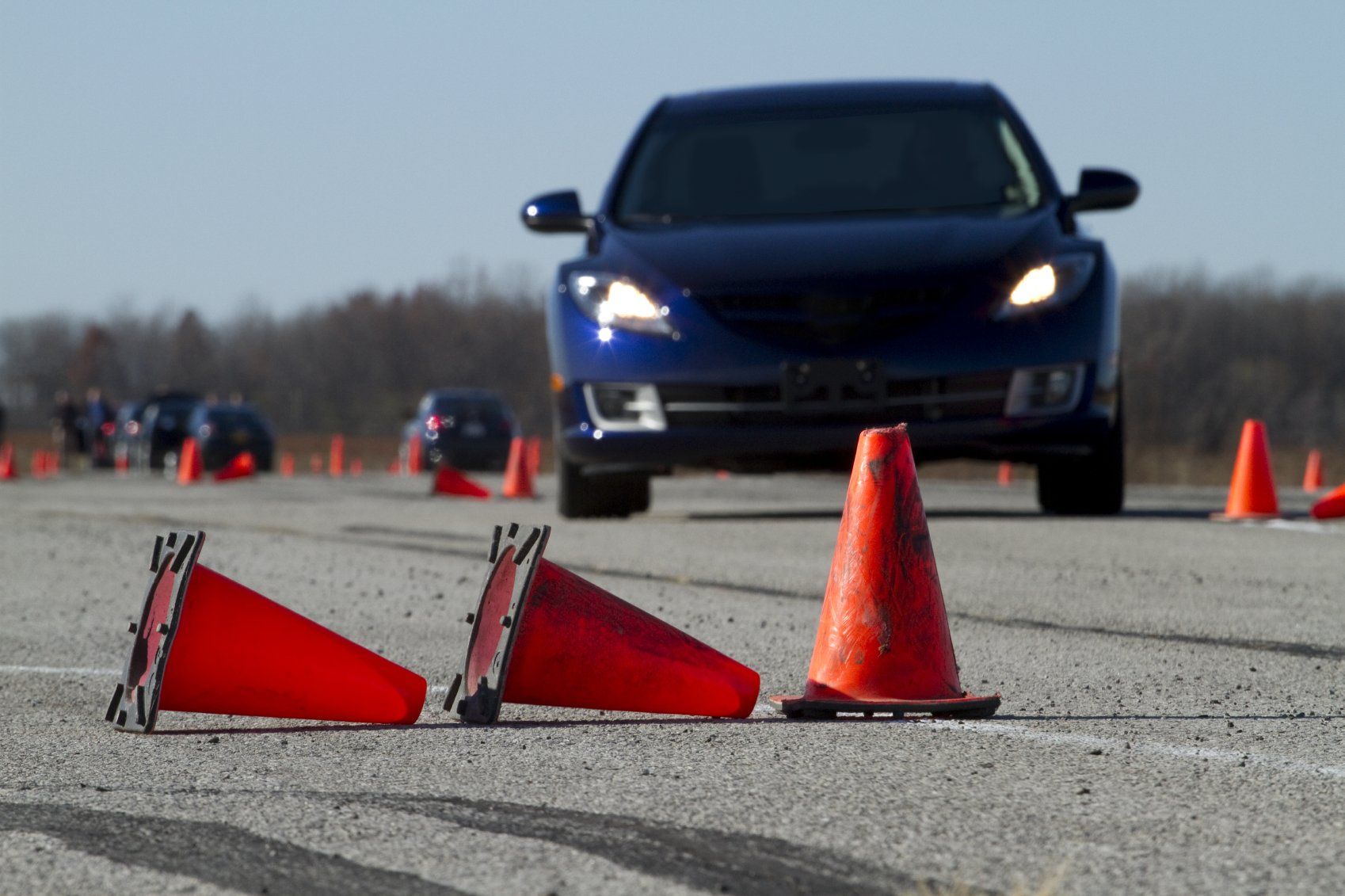Grumbles from the Gearbox
Inner mind of the dvsa think tank- anyone found the answer yet?
At the AADI we share the frustration of many of our colleagues, who span the length and breadth of the UK. Yes we too feel deflated by the latest proposal regarding trailer tests being scrapped. This is surely harking back to an era, that the powers that be were unhappy about. Indeed for countless years driving licences have contained categories. You would not expect to take a test in a bus or lorry having never driven a car or passed a category B test.
There have been many notable incidents over the years whereby either life changing injuries or death have occurred due to unsafe loads, faulty trailers, lack of knowledge, handling just to name a few.
No one can ever forget the tragic loss of life to :-
https://www.bristolpost.co.uk/news/bristol-news/freddie-hussey-half-trailers-unsafe-3113667
We feel here at The AADI that both the government and the dvsa need to reconsider their idea. It will have a huge impact for all the wrong reasons on our roads, it will also stretch the police, Highways England and not to mention the VOSA section of the DVSA
Yes there are massive issues relating to any form of driving test, but this is simply not the answer to the problem. The issue surrounding the problem that we all face simply bad decisions in government and the agency. Shortage of front line driving examiners is nothing new, nor is a high volume of driving tests awaiting a slot. During the reign of Allister People's the ex CEO of dvsa, his management conveniently scrapped the national waiting lists for the UK driving tests in all categories. Customer services have never excelled in contacting customers to alert them of cancellations.
So we urge the dvsa and transport minister to reconsider their decision and retain the test and a minimum number of hours of training to ensure we do not see an increase of incidents surrounding trailer safety. In support of this we submit our thoughts on the current situation below.
......................
Trailer Safety Statutory Report - July 2019
A report by Michael Ellis MP.
(response by the AADI)
This report is highlighting what the VOSA (now DVSA) have been doing over the past couple of years (since 2017), which are the same kind of road side checks I used to be involved with in the Heavy Goods Vehicle Traffic Group, based out of Fareham between 1989 - 2002.
It was not uncommon to find around half those vehicles being stopped were issued with some form of Prohibition, be that Immediate, where the issue had to be rectified before they were allowed to move or Delayed where they could go back to their depot and the vehicle must then be rectified before it is allowed back on the road.
Trailer Safety Statutory Report 2019.[1]
Foreword.
Page 5.
Only in a relatively few cases do defects contribute to injury incidents. In some
respects, trailer-related incidents share some characteristics with incidents in the
wider light vehicle fleet, including that
human error is a far more prevalent reason. On the basis of the information assessed so far,
I am not convinced that the Government should extend vehicle testing to light trailers.
Executive Summary.
Page 7.
1.2 " ….2017, there were approximately 20 collisions resulting in injury or death where a vehicle defect in a trailer was a contributory factor…
….Breakdown, trunk road and off-road monitoring data suggest tyre defects and hitching issues are amongst the more prevalent, within the relatively low levels of incidents". Again this suggests Operator Error, which comes back to training and checks and balances via testing!!
1.9 The “Towsafe4Freddie” campaign gets a mention in this report to stop more caravans, albeit it was NOT a caravan that caused Freddie's death…
"The new campaign follows the tragic death of 3-year-old Freddie Hussey in January 2014. Freddie was walking with his mother in Bedminster, Bristol, when a 2-tonne trailer became unattached from a Land Rover. The trailer mounted the kerb before hitting Freddie."
Again, this was an OPERATOR ERROR and therefore should be good enough reason to ensure checks and balances are in place via TESTING, against just having those on a register sign off customers who they have trained. This could so easily leave the towing industry wide open to just sign customers off without doing the checks!!
1.11 … "In respect of the licensing and regulatory regimes, the driving licence regime was changed in 1997 and again in 2013 to increase the cases when newer drivers need to pass specific tests before they can tow light trailers in many circumstances.
DVSA will consider whether changes can be made to how testing is done to make it
more effective."
So at the time of this report being put together, there were STILL discussions about how TESTING of newer drivers could reduce the towed light vehicle incidences as a road safety measure, yet on the 10th September 2021 Government (DVSA), have abolished the need to take a test, which will, in effect make those that want or need to tow a light trailer, not even take training.
This report mainly features on the more commercial trailers, however, it s interesting to see some of the CRASH STATS of vehicles involved whilst towing trailers:
2.8 The following table shows the number of each of these types of towing involved in a collision:
Type of tow Number involved in a collision
Articulated Vehicle 2,324
Double/Multiple Trailer 50
Caravan 158
Single Trailer 791
Other Tow 382
No Tow/Articulation 230,772
Data Missing/Out of range 4,449
Total 238,926
Table 1 Number of towing vehicles involved in collisions - 2017
Stats19 need to be taken with some kind of consideration to the understanding that all Fatal crashes get reported to police, however, not all other levels of crashes do, and only turn up as a crash stat in those where medical treatment or an insurance claim is made, which tends to show the numbers are much higher. What the Stats19 doesn't do is provide an exact reason for the crash, i.e., if the towed or towing vehicle had a defect or the driver had an medical emergency that caused the incident that caused the crash.
There is a lack of specificity in the data which makes firm conclusions of the number of incidents involving trailers from 750kg-3,500kg, in particular, difficult to reach, which is the area that the vast majority of trainers work in, and who now, due to the actions of the Government (DVSA) have lost their business, potentially completely, because now, no tests (Checks & Balances) are to take place so who is going to undergo an intensive towing course which should also include the manoeuvring part of towing a light trailer? The likelihood is not many!
I foresee the KSI stats of those towing light trailers will rise over the next year or two, but by then it will be too late, and of course the DVSA will blame the industry for poor teaching, albeit, it has everything to do with there actions of abolishing light trailer tests because they can't manage the back log of tests for other commercial drivers, let alone Cat. B (Car) tests.
Agricultural vehicles.
2.23 Additional analysis was undertaken relating to agricultural trailers. These vehicles are exempt from roadworthiness testing. There were 41 collisions involving agricultural vehicles in 2017, including either an articulated vehicle or other tow. There were 50 casualties associated with these collisions. This is particularly of interest, because so many agricultural trailers have little or no need to have annual safety inspections!
On page 16 & 17 there are seven case studies all of which involve operator error of drivers, albeit FOUR drivers who were towing had inputs that caused the crash. (No's 1,3,5,& 7), albeit, the same conclusion is not reached by the author in 2.31.
Its important to understand that other authorities also collect data in a different format to that of the Police, which does not always tally up with STATS19 for one reason or another, which then suggests the STATS of any description should not always be taken at face value! See Table 5 under Highways England.
Within this report there is a great deal of comment about some of the mechanical failures, i.e., hand brake failure or hitching / unhitching actions the latter being an Operator Error, whereas the hand brake failure could be accepted as a mechanical failure. Tyres condition has previously mentioned as a causation for a crash, however this is a Operator Responsibility and therefore comes down to training, a does all Operator Error incidents!
Also of significance is the checks undertaken by The National Towing and Trailer Association (NTTA) who undertook 307 checks from member volunteers in the period July 2017 - Jan 2018, of which 89% were defective, compared to DVSA's random stop checks which registered a 50% defect rate. This could be down to how either organisation rates a defect, but it does suggest that because of there now being no Checks 7 Balances, more light trailer users will continue to use said trailers with defects, save when they feel they can get a free check. (Para. 276 - 278)
It is of note that some similarities can be discerned in the two data sets. Lights/electrics and tyre condition were the two most frequent defect types recorded in both sets of checks. NTTA checks reported higher proportions of defective handbrakes and electrics than the DVSA checks, and defective breakaway cables were common defects for both datasets. Again, these checks are the responsibility of the Operator, and demonstrates that Checks & Balances should not be removed from the road safety/Safe Driving for life ethos!
2.73 The correlation seen above is not as strong across the other trailer types, for example, livestock trailers had the second highest level of compliance (64 per cent) and the second highest average age (10 years). Whereas general purpose trailers had an average age of 7.6 years and 44 per cent compliance, which would indicate that maintenance regimes play a role in increasing compliance.
2.74 A comparison of the results of these checks with those of the fleet compliance checks indicate a greater proportion of regulated trailers being found compliant (84
per cent versus 50 per cent). This is a significant differential. However, although the
level of compliance does give rise to concern, this cannot be entirely attributed to
roadworthiness testing.
2.75 In order to understand the reasons for this differential, consideration must be given to the roles of roadworthiness testing, maintenance by commercial/non-commercial users, the role of operator Licencing (typically applicable to those using heavier trailers) and increased enforcement for heavier trailers, as each is likely to play a role in increased compliance levels for O3 and O4 trailers.
NTTA trailer safety checks.
2.76 The National Towing and Trailer Association (NTTA) provided data from 307 free safety checks they conducted at NTTA certified servicing centres, between July
2017 and January 2018. There is a significant differential between the results of
these checks and those recorded by DVSA. 89 per cent of trailers failing NTTA
checks with one or more defects recorded.
2.77 There are significant differences in the targeting of these checks which may explain this differential, at least in part. DVSA light trailer checks (02) were conducted in a random fashion as far as possible, in order to give a dataset broadly comparable with the Fleet Compliance Check. Conversely, NTTA checks were conducted by a self-selecting set of vehicle owners who voluntarily put vehicles forward for checks at a servicing site.
2.78 However, some similarities can be discerned in the two data sets. Lights/electrics and tyre condition were the two most frequent defect types recorded in both sets of
checks. NTTA checks reported higher proportions of defective handbrakes and
electrics than the DVSA checks, and defective breakaway cables were common
defects for both datasets.
Caravan insurance data. In paragraphs:
2.79 The Caravan and Motor Home Club (CMHC) and The Camping and Caravanning Club (CCC) provided information on the most frequent types of claims made and the variation of these through the years, CAMC 2006 to 2018, and CCC 2016 to 2018.
2.80 The most frequent claims for caravans involved in an incident were:
• Detachment of the trailer;
• Nearside wheel loss;
• Collisions generated by snaking of the trailer.
The CCC data show that claims are not primarily related to mechanical faults of trailers but relate to distracted drivers, thefts, and adverse meteorological conditions
Again looking at these data sets, it infers Operator Responsibility is lacking as is the training of those responsibilities, which the DVSA say there is no excuse.[1]. Things will only get worse now there is to be no Checks & Balances due to testing being discontinued in the weight range of 750Kg's - 3.500Kg's!
The Light Trailer (Cat.02) is not routinely assessed for road worthiness by the authorities like the heavier class of trailers are (Cat 03 & 04) and who have other checks and balances imposed upon them with Operator Licence requirements. It is estimated there are 1.39 million trailers in use in the UK of the 02 category, of which very few are routinely checked for road worthiness, and which potentially gives rise to incidents occurring on the UKs roads, because a large number of Users do not fully understand their responsibilities, eve thought they may have time served as a Cat B licence holder.
This situation can only deteriorate over the next one or two years given how many novice drivers may be asked to drive a van or size of vehicle that is capable of towing a light trailer and not be given the correct training, which ultimately could result in fatal, serious injuries to other road users or severe damage to property as a result of the potential increased number of incidents, all because the Governing Body (DVSA) is unable to manage testing for lorry drivers!
The Trailer Safety Statutory Report indicates there is marginal scope for reduced casualties IF light trailers were to be brought into the annual testing regime, of which the recommendation is not to do that. What it does not tackle is the lack of training, yet some of the case studies it has decided to print within the report, suggests to this author, is that the potential for reducing crashes and injuries is far greater IF compulsory training followed by Testing were not to be removed, as is now to be the case.
As previously mentioned, Joe Public will not undergo training now they know there is to be no testing for towing a light trailer with a motor vehicle of a suitable category. It may also leave open for those who are also looking to cut their costs to not provide suitable training, but instead take a chance and hope for the best!
The report outlines the Driving Test Requirements in para. 5.22 - 5.29 and particularly of note is 5.26 where it indicates "stakeholder and data sources pinpoint driver error as a key factor in towing incidents, it is sensible to consider improvements to this test." In 5.27 it says, "DVSA will be considering revisions and improvements to the B+E safety questions, which form part of the practical test, over coming months. These will seek to address issues which have been raised during this report."
In just two years the DVSA have abrogated their responsibilities and dumped the lot, including revising the national syllabus which is highlighted in Para. 528.
At the stroke of someone's pen, HMG and the DVSA have now managed to worm their way out of complying with any and all of the recommendations of the report. How convenient!!
...............
[1] DoT - Trailer Statutory Safety Report 2019. APS Group on behalf of the Controller of Her Majesty’s Stationery Office - Accessed on line 120921 https://assets.publishing.service.gov.uk/government/uploads/system/uploads/attachment_data/file/818125/trailer-safety-statutory-report-print.pdf
[2] Comment from CEO DVSA Gareth Llewellyn - accessed on line 120921 - Make sure your trailer is safe - https://www.gov.uk/government/news/road-safety-campaign-urges-drivers-to-towsafe4freddie
Grumblers email address
There is now an email address for the Grumbler thegrumbler@theaadi.co.uk so you can drop a line if you have a question you'd like to ask, or a story/information to provide/pass on (in total confidence of course so dvsa employees need not worry). Trolls will be ignored and deleted by my pet Ork.
As usual, if there is anything that you see is incorrect or, plain wrong, I apologise, and if you drop a line via the Contact Us page it will be edited.











